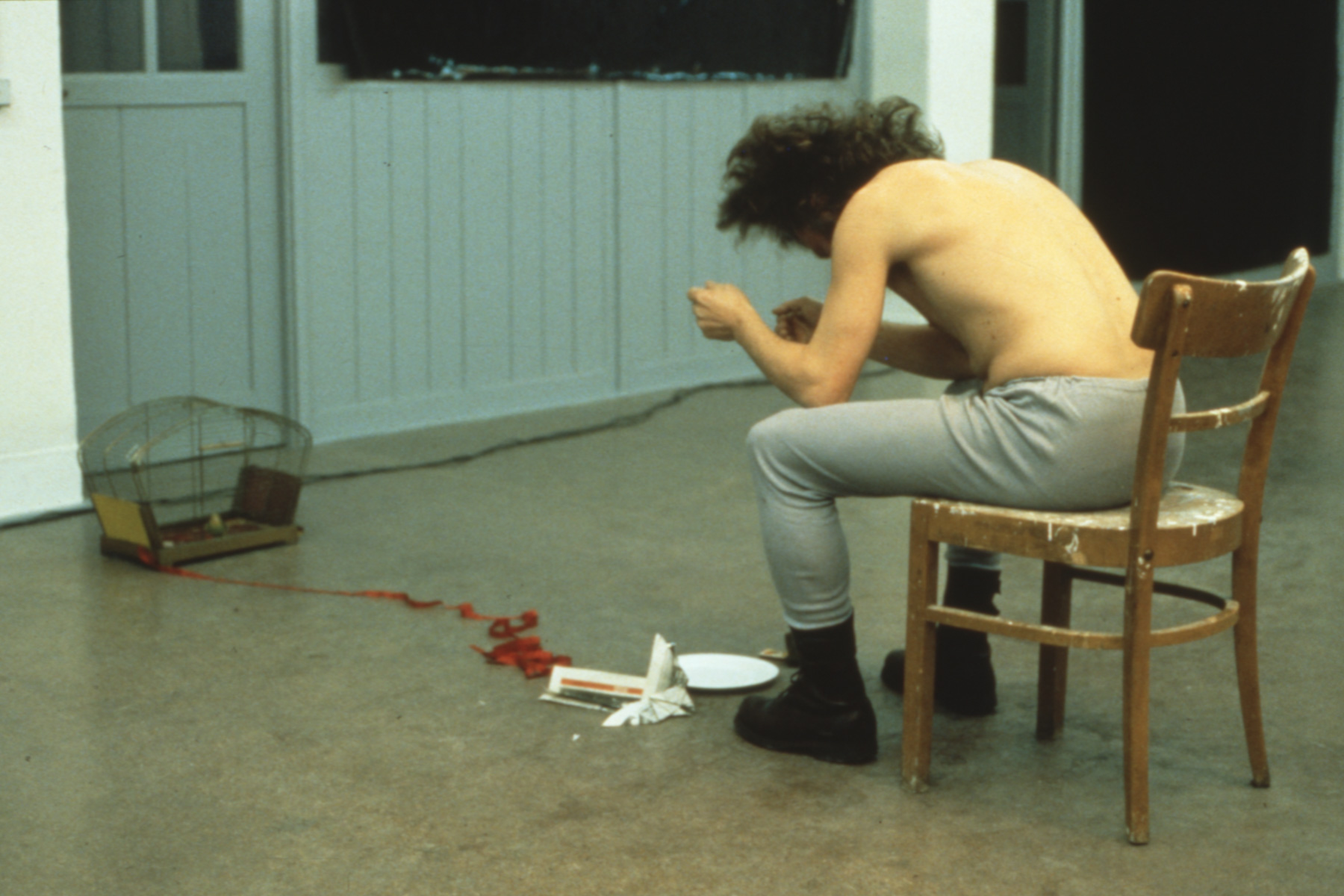Zbigniew Warpechowski
A performer, painter, poet and art philosopher. For many years a member of the international performers’ collective Black Market.
Warpechowski was born in Płoski in Volhynia in 1938. He lives and works in Sandomierz (Poland).
In 1956–1962, the future performer studied Architecture at the Tadeusz Kościuszko University of Technology, and in 1964–1965 (for one year), he was a student in the Faculty of Industrial Design at the Kraków Academy of Fine Arts (ASP).
Zbigniew Warpechowski has cultivated performance art since 1967, which makes him a forerunner of this movement, not only in Poland, but also in the international arena. He has had over 300 performances in many countries in Europe, Asia and North America. The artist became a member of Grupa Krakowska (the Kraków Group) in 1985, and since 1986 he has belonged to the legendary Black Market, an international group gathering pioneers of performance art, such as Norbert Klassen, Alastair MacLennan, Nigel Rolfe, Zygmunt Piotrowski, etc. He has designed films sets for eight feature films, four of which were directed by Grzegorz Królikiewicz.
Warpechowski’s artistic career started with figurative painting. After giving up studies at the ASP in Kraków, he went into writing poetry, and it was this artistic medium that steered him towards performance art. The artist says, “Initially, I called my work actions. I heard the term ‘performance’ for the first time in Marseille in 1975”.
Warpechowski’s first performances, The Poetic Quarter (with Tomasz Stańko) and Poetic Quarter with Record Player and Piano Accompaniment, took place in Kraków’s 13 Club (Klub 13) in 1967. They combined elements of music, poetry and partially improvised gestures.
In 1971, Warpechowski gave the first of a series of performances with a living fish, entitled “Water”, in Andrzej Partum’s Poetry Office (Biuro Poezji) in Warsaw. Subsequent actions involved live birds, pigeons and parrots, too; for example in Non-Intervention – Nothing, a video performance of 1974. One of the key concepts for his art was “NOTHING”, which appeared as a subject of performances and installations, among others in the environment Dishing Out, whose first version was created in the Krzysztofory Gallery in 1971, and then repeated in the following year in the Richard Demarco Gallery in Edinburgh.
The Champion of Golgotha (1978), in which the artist raised the issue of idolatry, presenting the figure of Christ as a contemporary sports idol, was an important performance in Warpechowski’s career. Treating the Champion as his alter ego, the performer repeatedly came back to it.
Warpechowski’s output embraces numerous performances during which the artist, in the name of the authenticity of expression, tortured and hurt his body, for example in Agreement of 1981, addressing the current political situation in Poland. During the March show in Stuttgart in 1984, he set fire to his hair. A photograph of this action made the cover of Elisabeth Jappe’s book, Performance – Ritual – Prozess. Handbuch der Aktionskunst in Europa (Munich, 1993).
For some time, Warpechowski, who calls himself an “avant-garde traditionalist”, has been doing performances which are highly critical of contemporary consumerist culture, the domination of the media, postmodernism and social liberalism, among others The Horn of Remembrance (1997) and The Superior Variant (2004).
In 1974, at the Gathering of Dreamers in Elbląg, Warpechowski announced his first theoretical manifesto, An Artist Is, in which he emphasised “the significance of the individual activity carried out by an artist on his/her own responsibility” in the process of an avant-garde work of art coming into being.
Since that time he has published many texts and books, such as Textbook (1990), Storage Container (1998), Elevator (2001), Stabiliser (2004), Textbook: Encore (2006) and Avant-garde Conservatism (2014), in which he described his reflections about modern culture, philosophy, faith and personal experiences.
Besides that, Zbigniew Warpechowski has also made sculptures and objects, for example the Tattoos series (1983–1987), Word (2009) and Authority (2010).
Recently, he has been more and more heavily leaning towards painting in its almost classical form, both as regards the technique and subject matter.
In 1997, Warpechowski received the Minister of Culture and Art Award in recognition of his 30-year activity in the field of performance art. In 2009, he was given the Medal for Merit to Culture – Gloria Artis. An extensive retrospective exhibition of Zbigniew Warpechowski, entitled It, was held at Zachęta – National Gallery of Art in 2014. In 2017, the same venue hosted “A Ceremonious Performance”, an event organised to celebrate 50 years of the artist’s performance art.
His works can be found, among others, in the collections of: the National Museum in Warsaw, the Museum of Modern Art in Warsaw, the National Museum in Kraków, the Museum of Contemporary Art in Kraków, the Museum of Art in Łódź, the National Museum in Wrocław, the Leon Wyczółkowski District Museum in Bydgoszcz, and many more.




